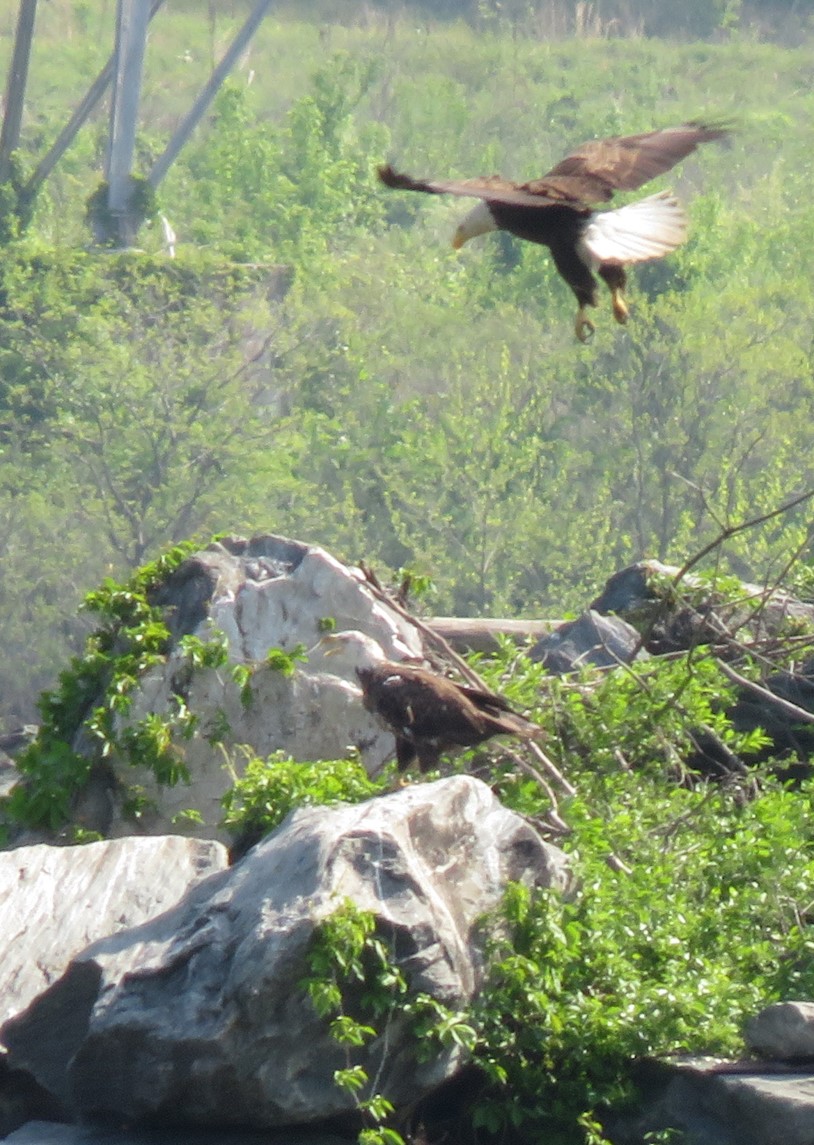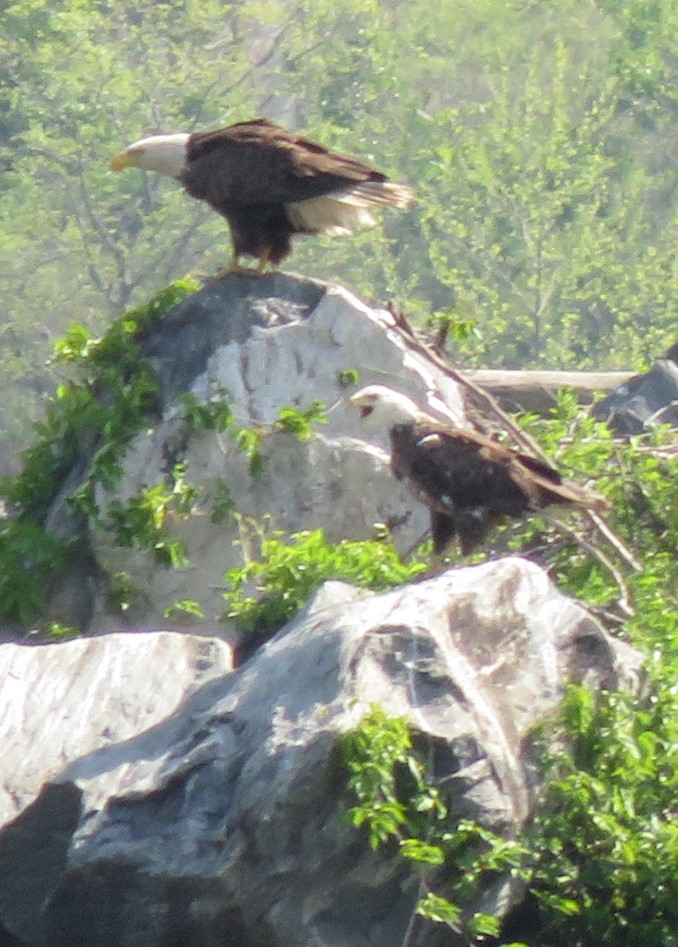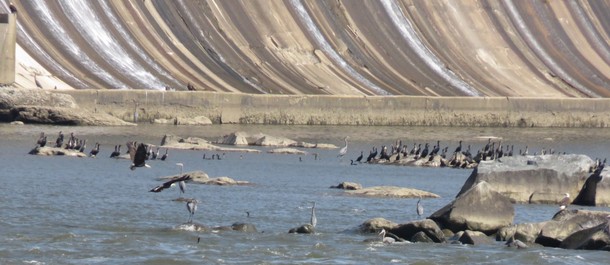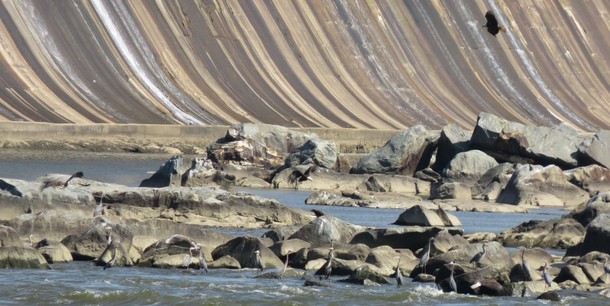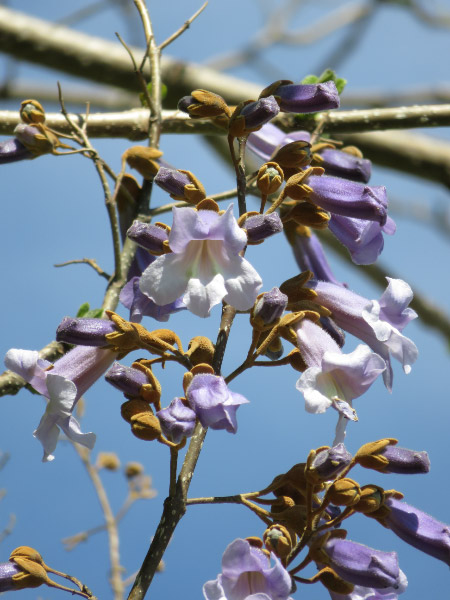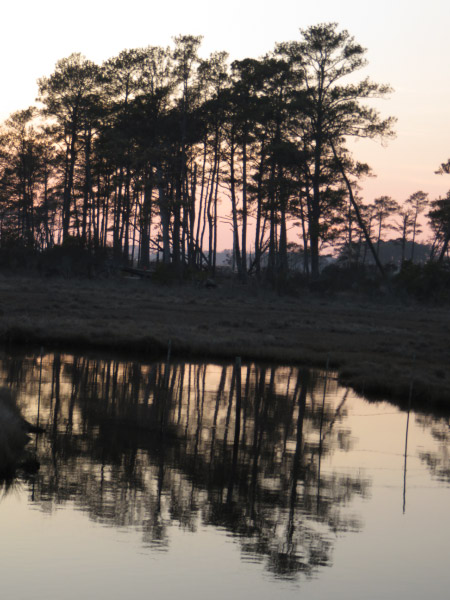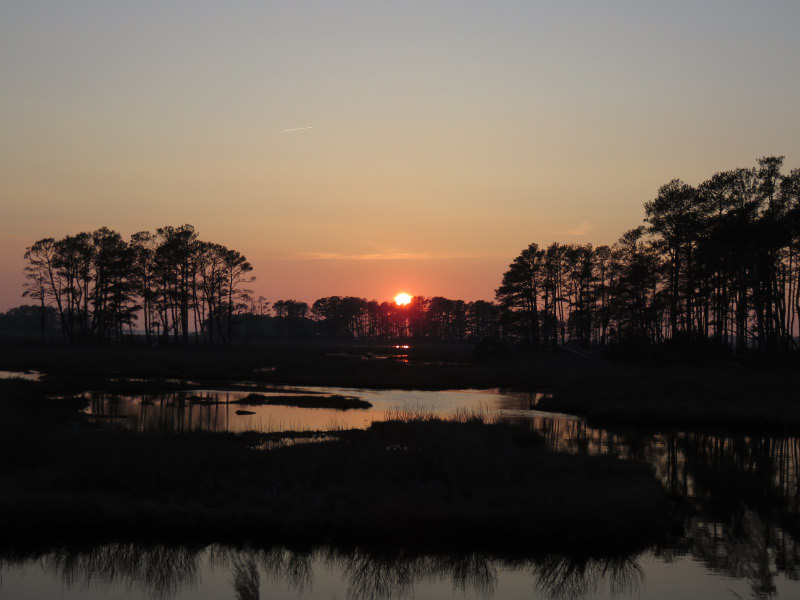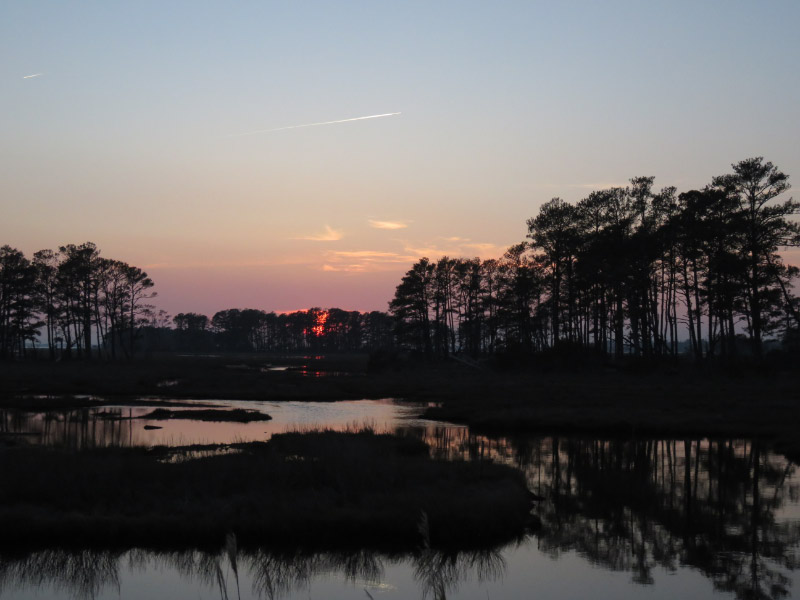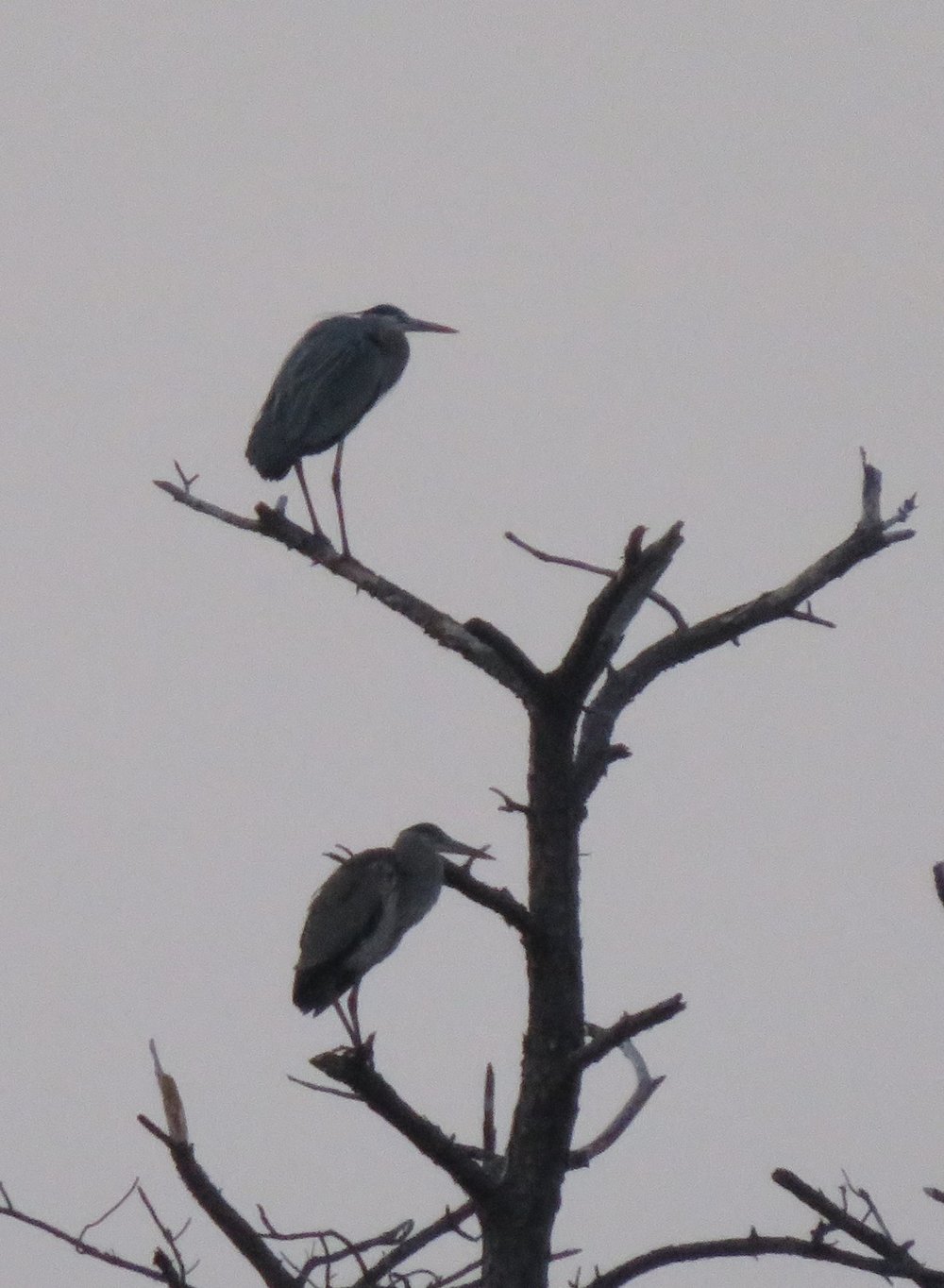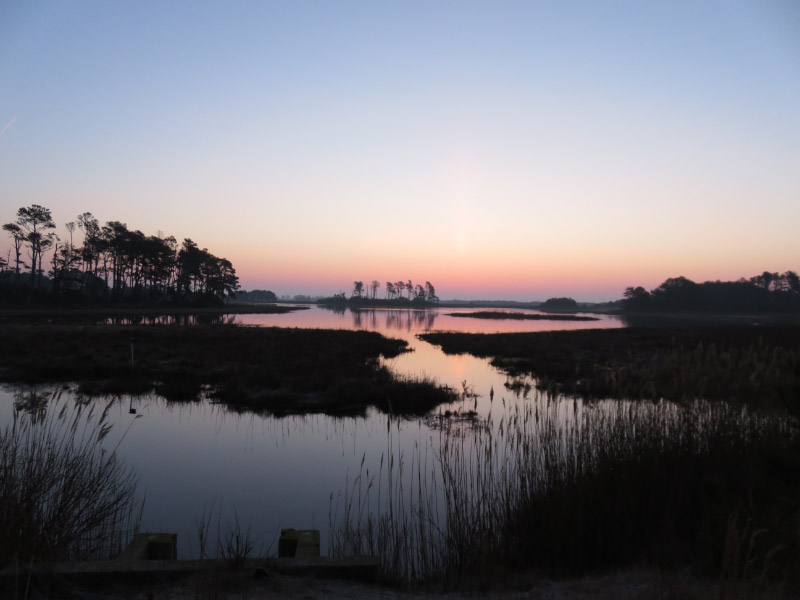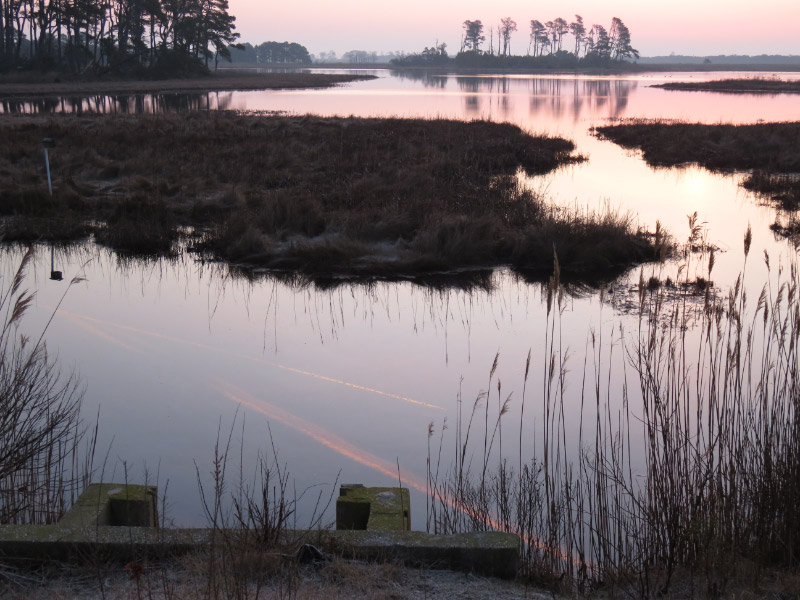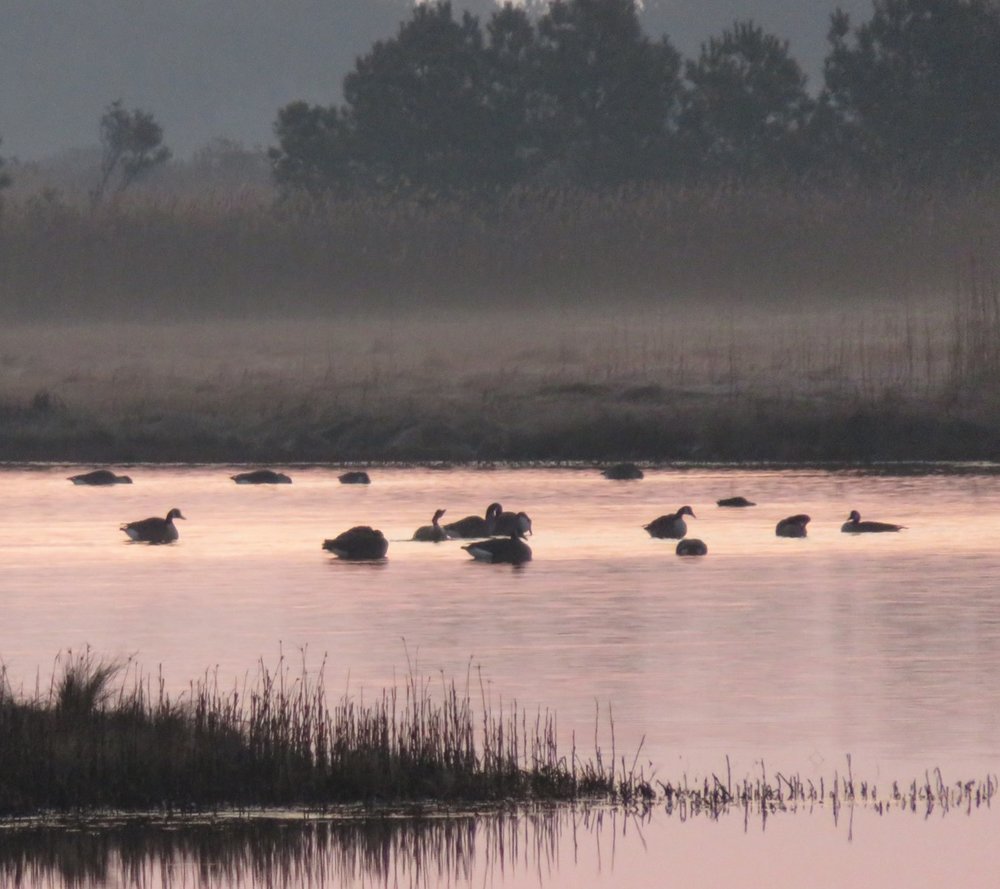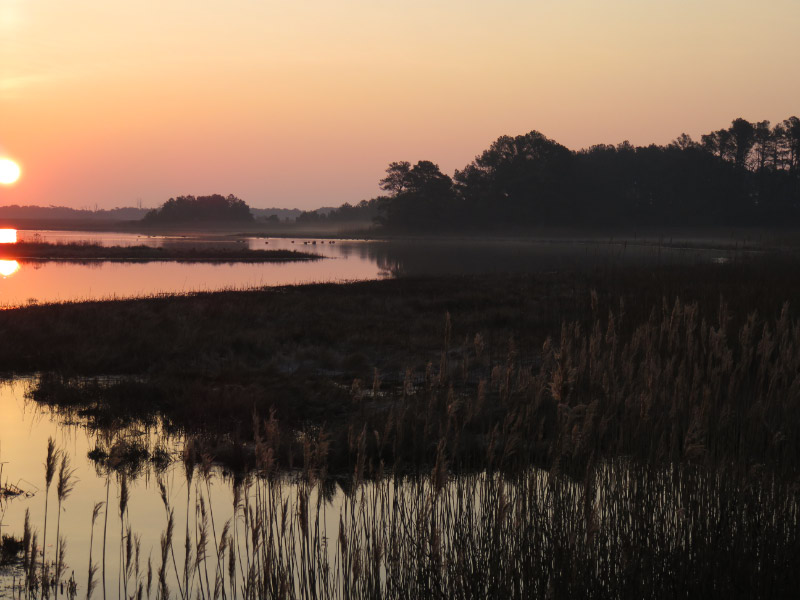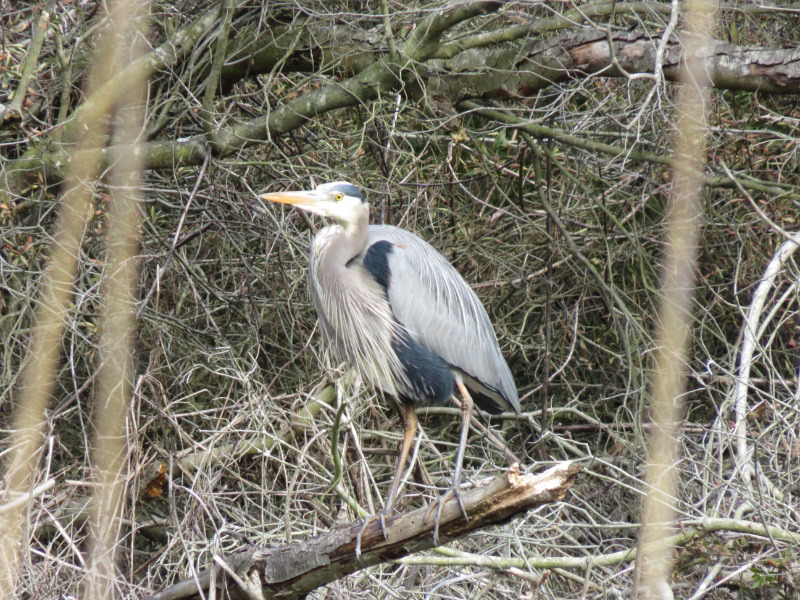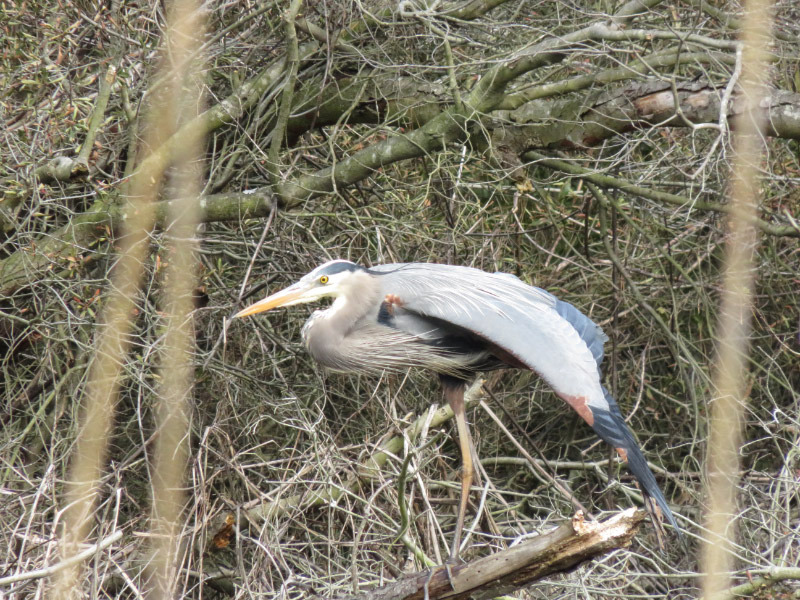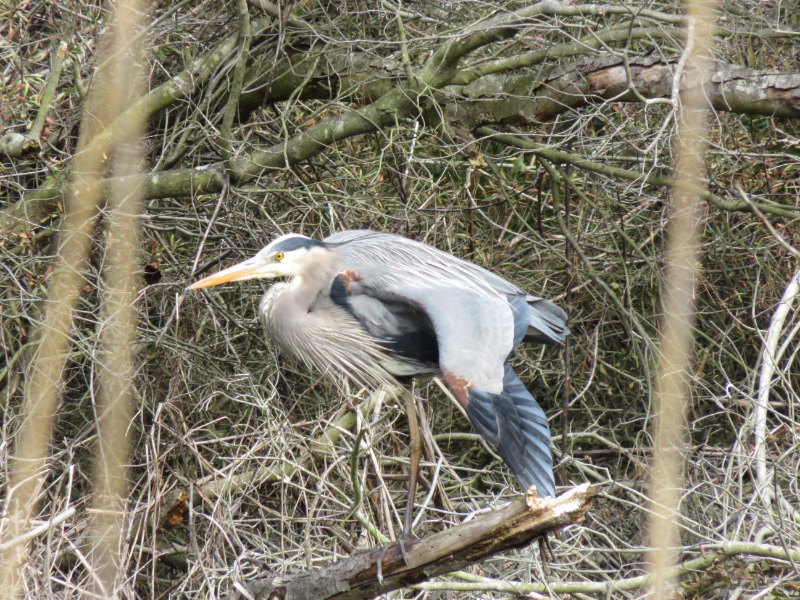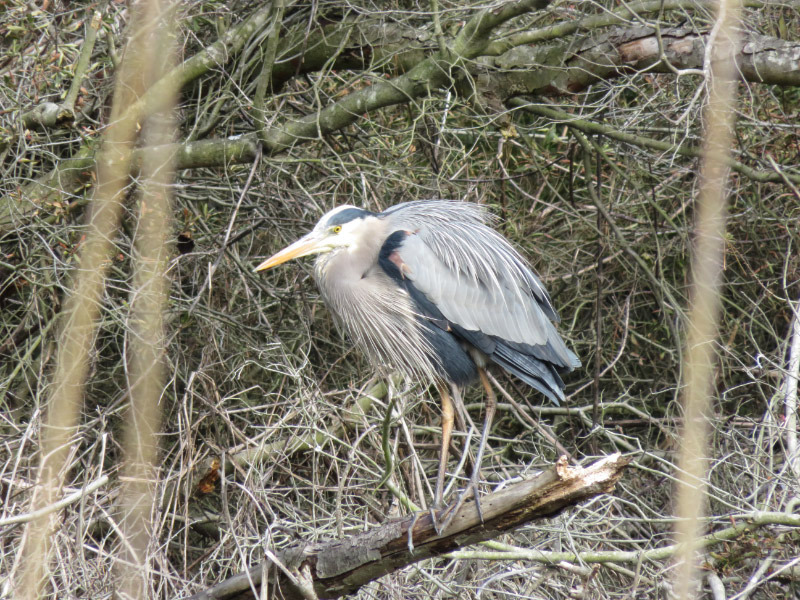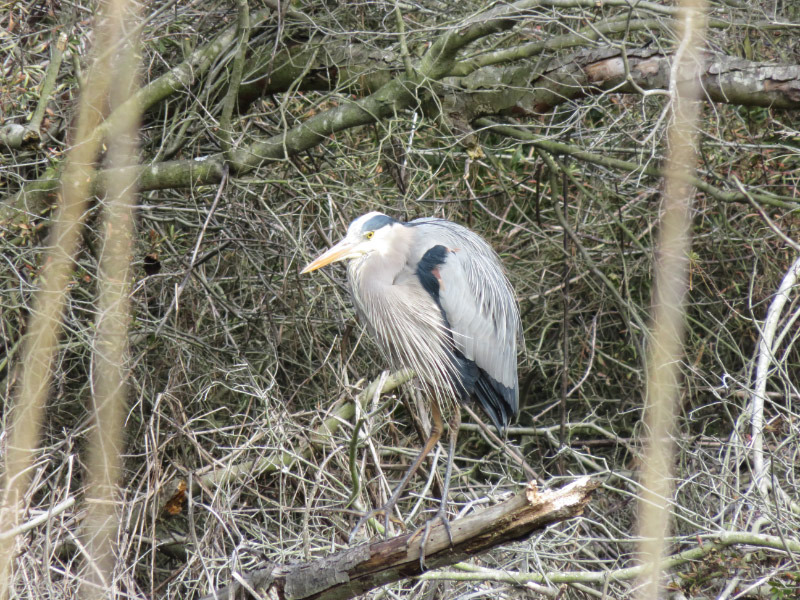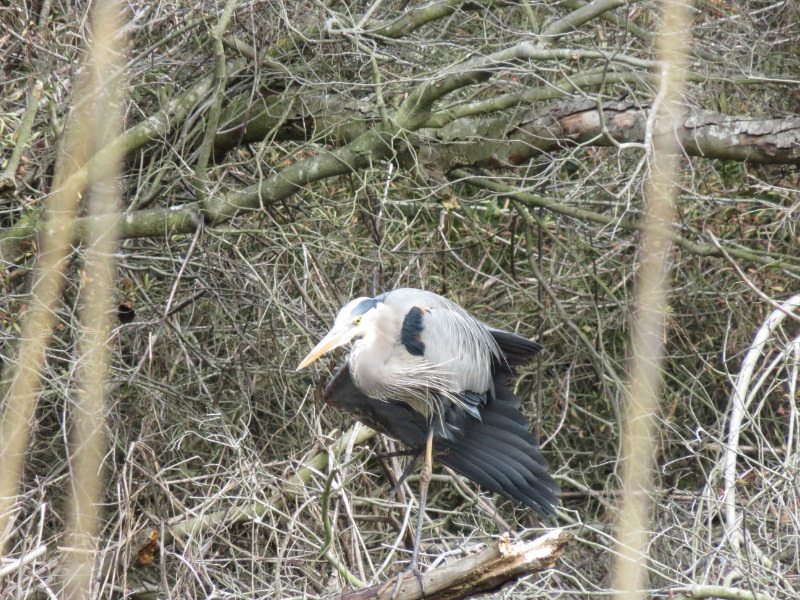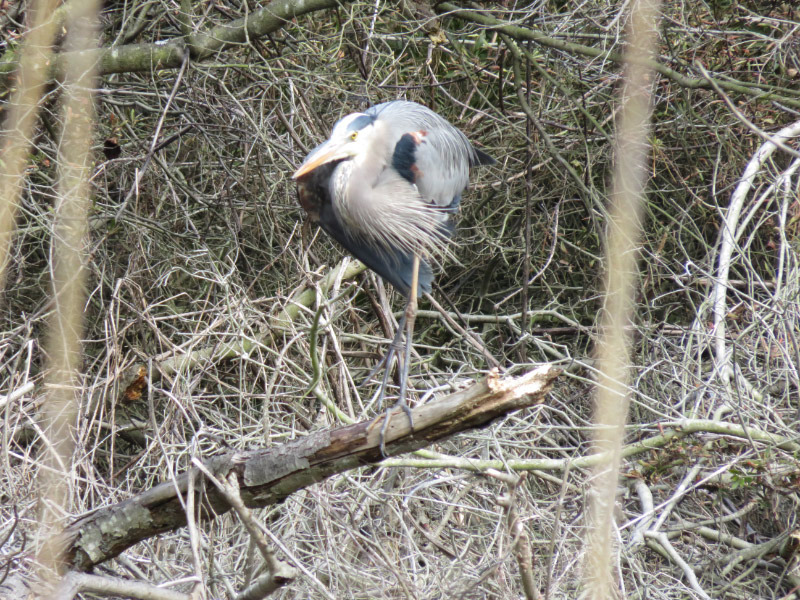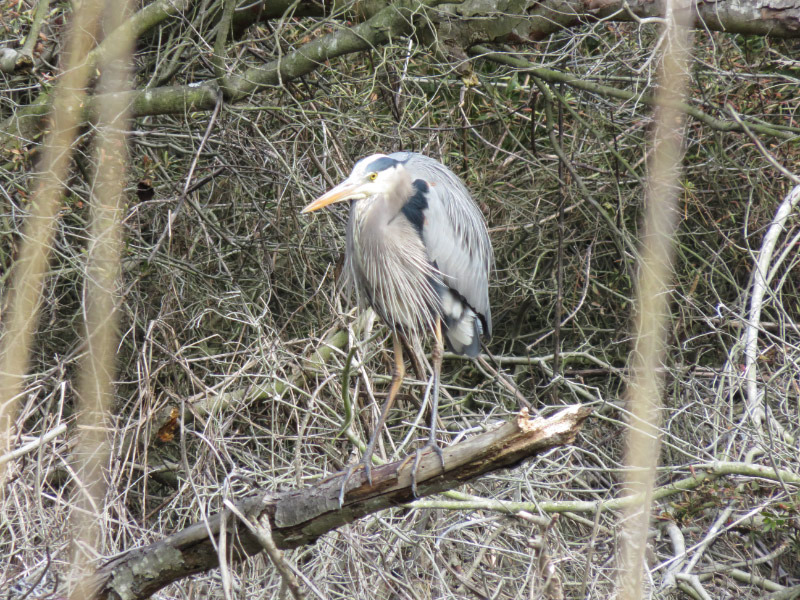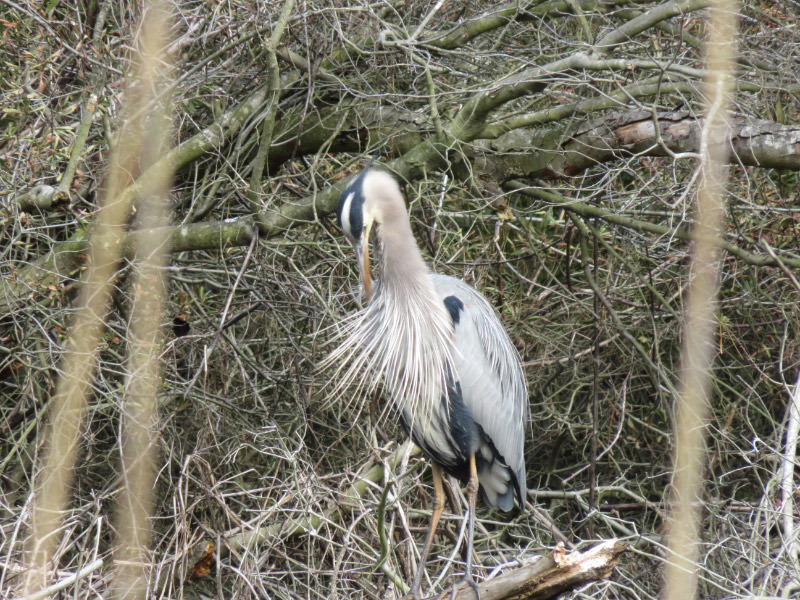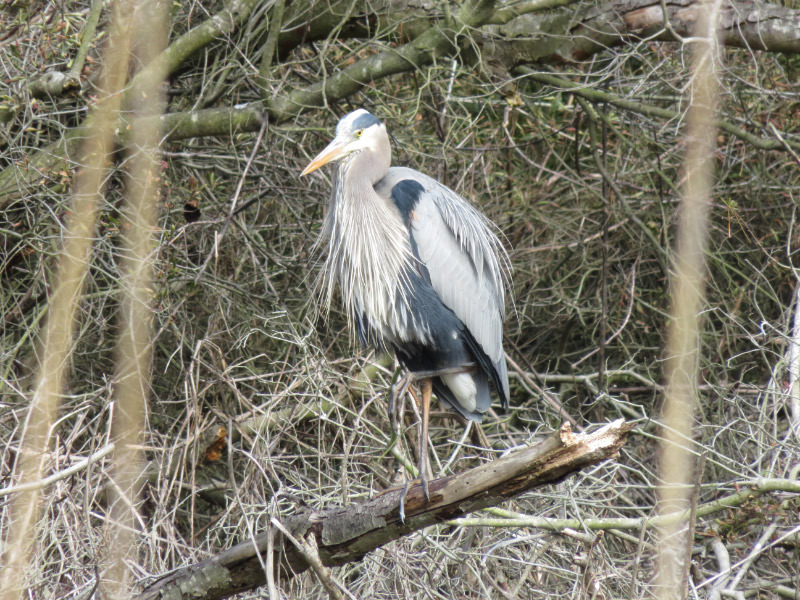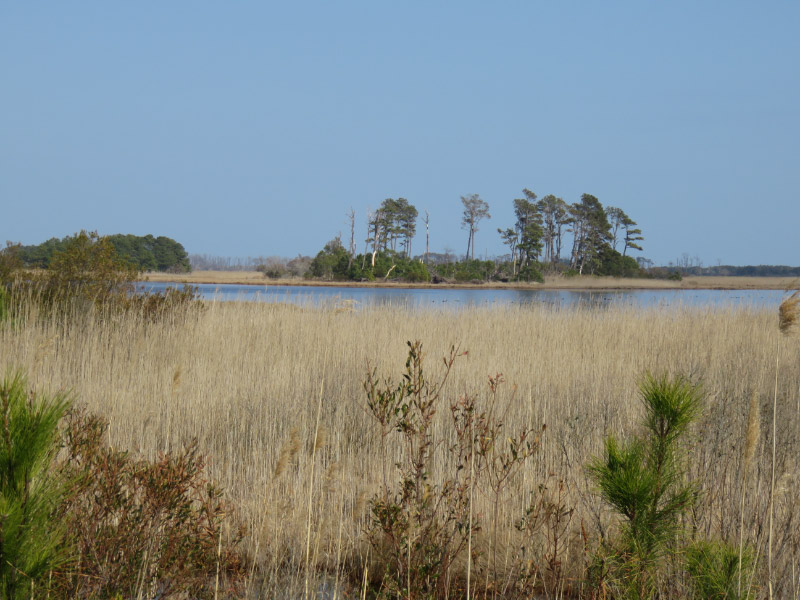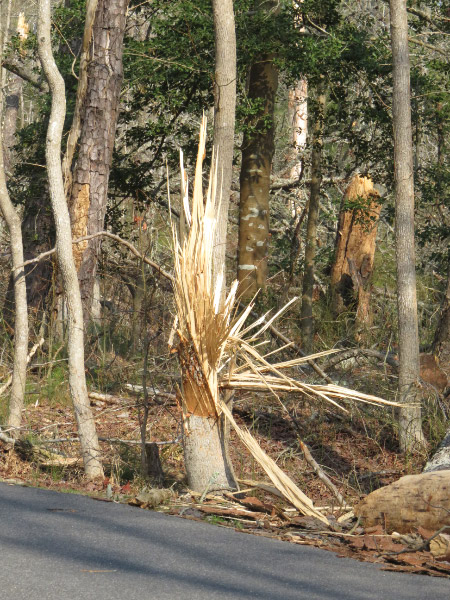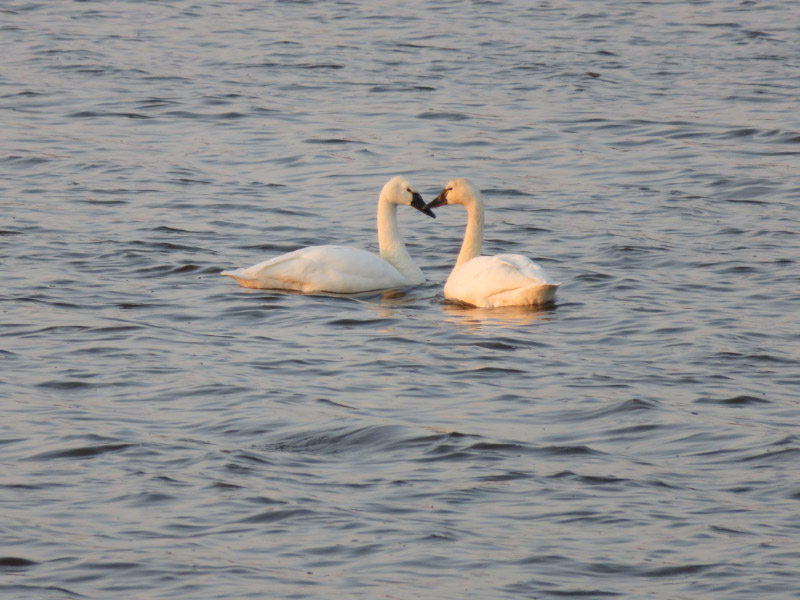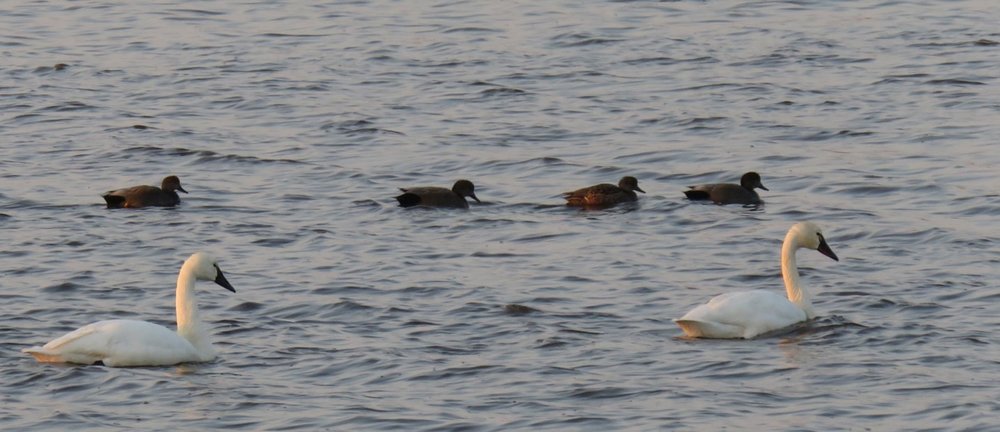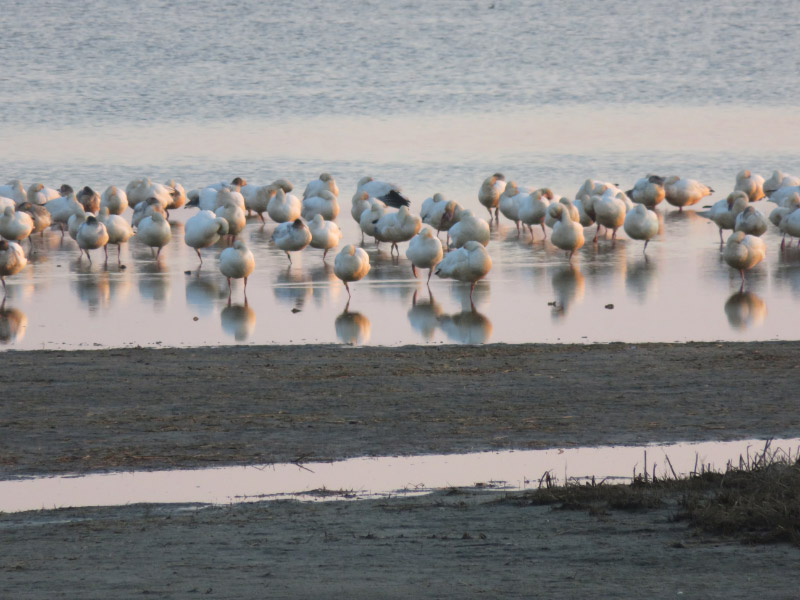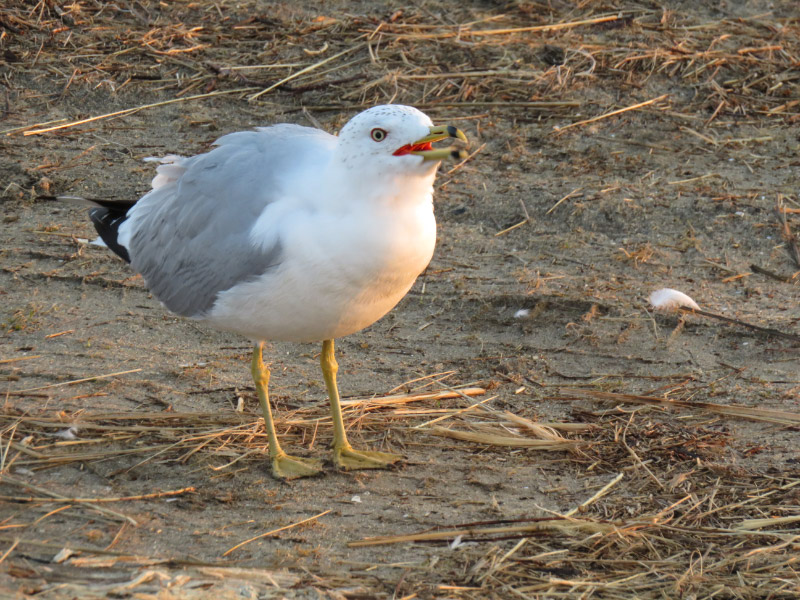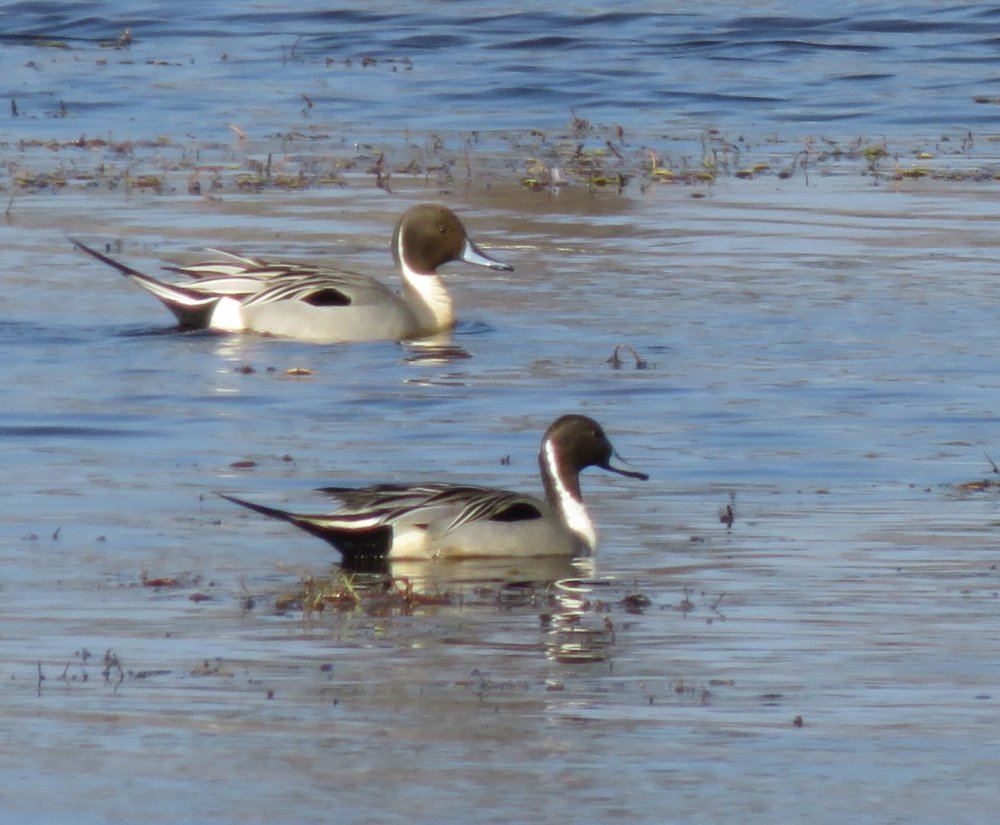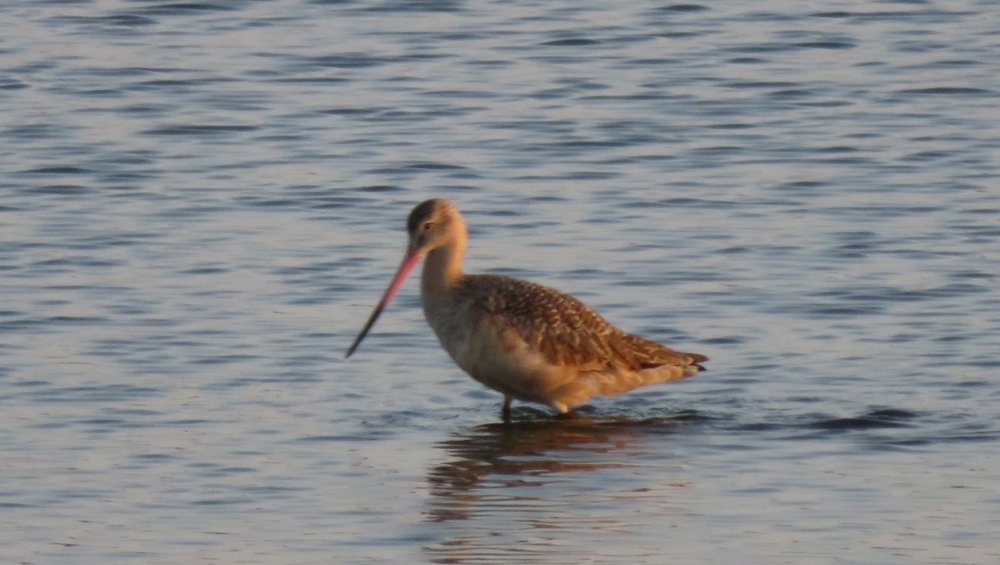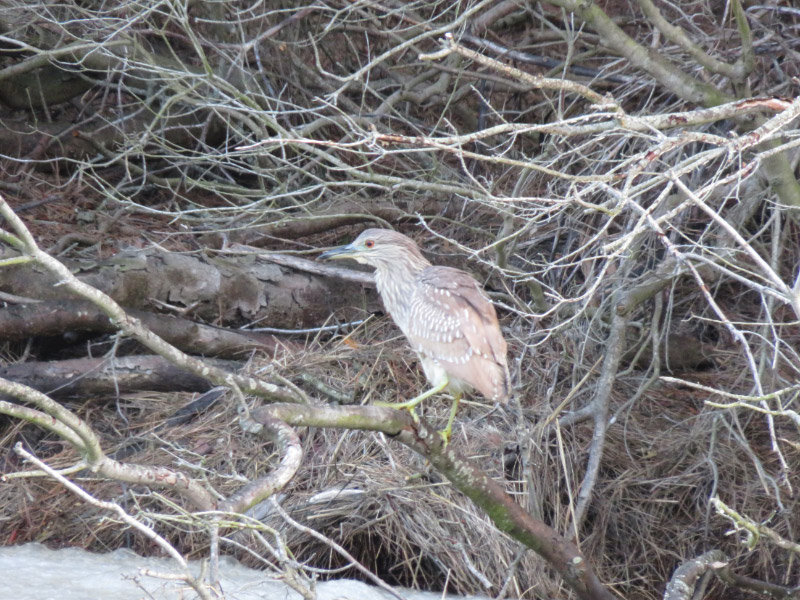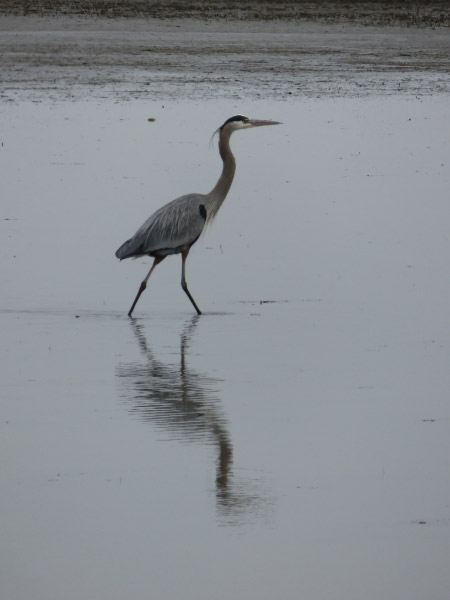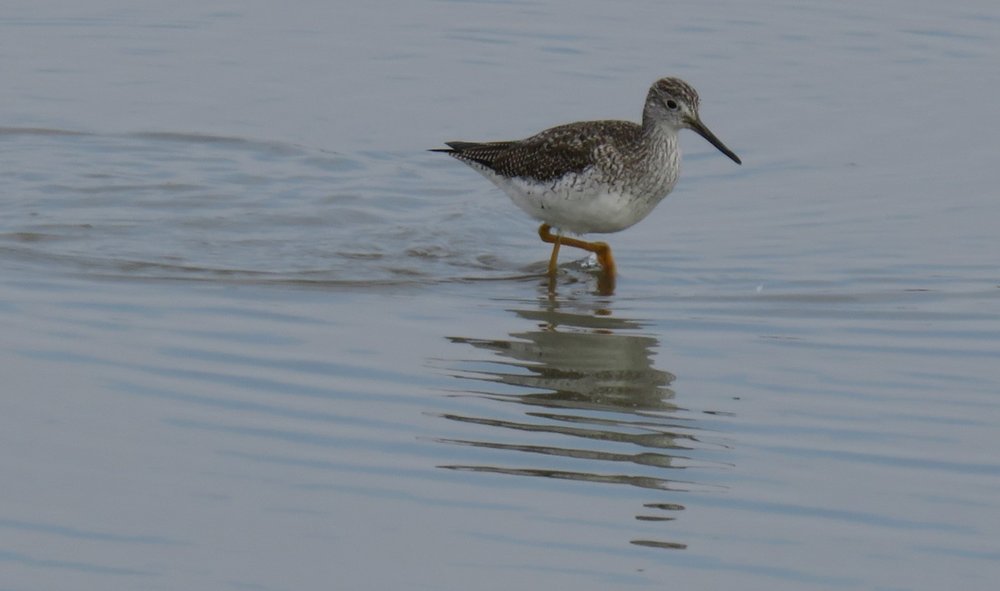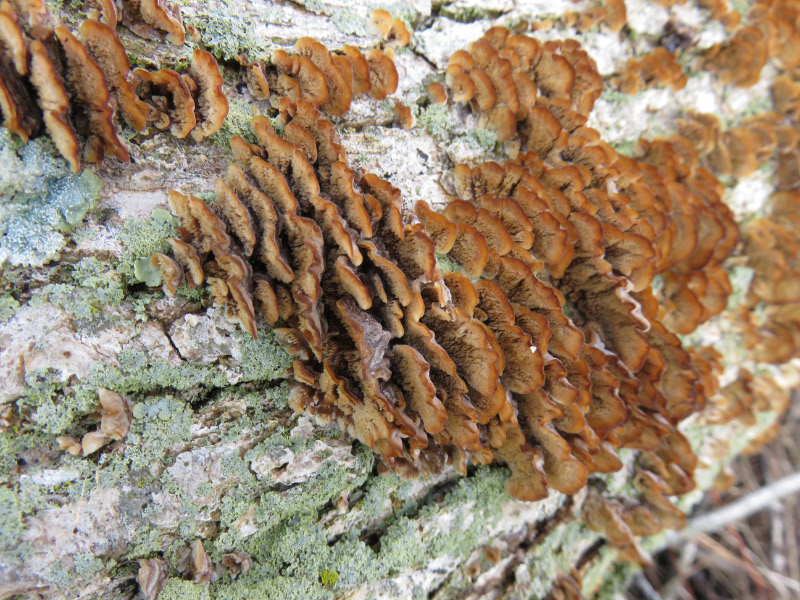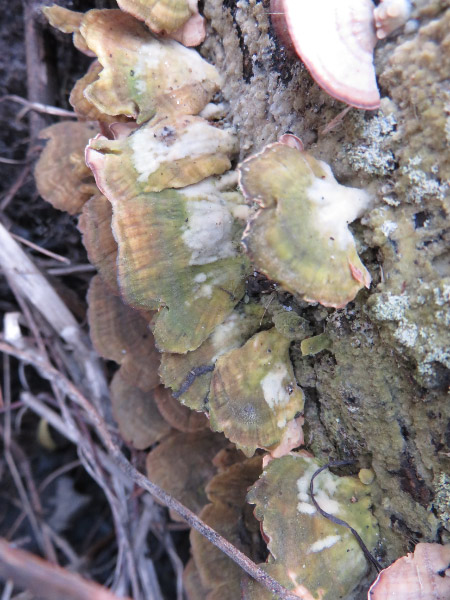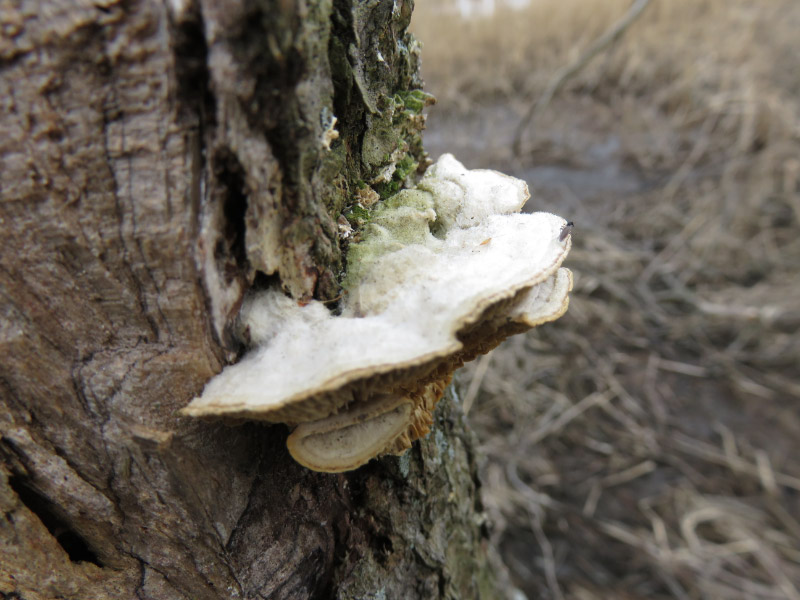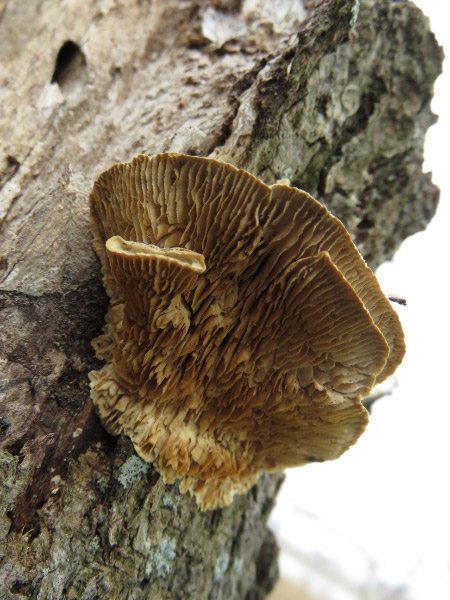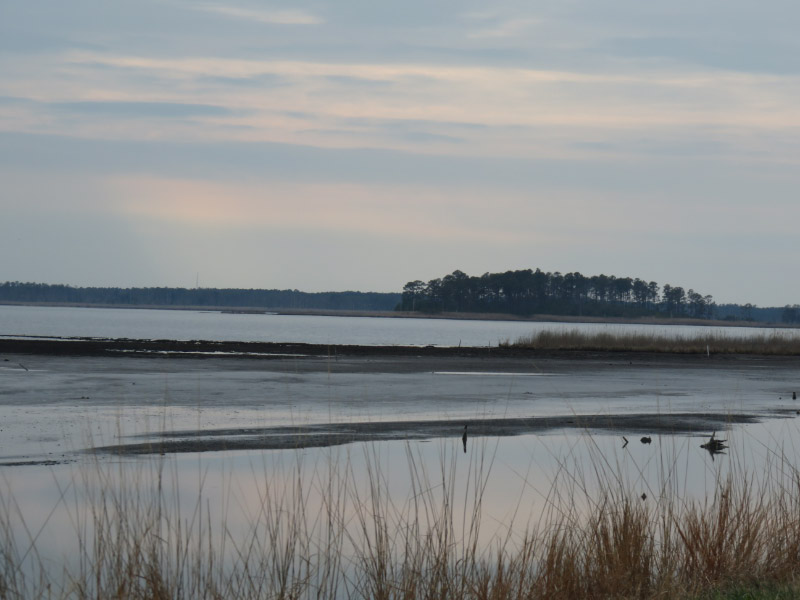Conowingo - December 2016
/Yesterday we spent the morning at Conowingo Fisherman’s Park. It was a sunny morning – Christmas – and the traffic was light. When we got there we immediately noticed that there were more gulls than we’d seen before and the water was churning from the dam.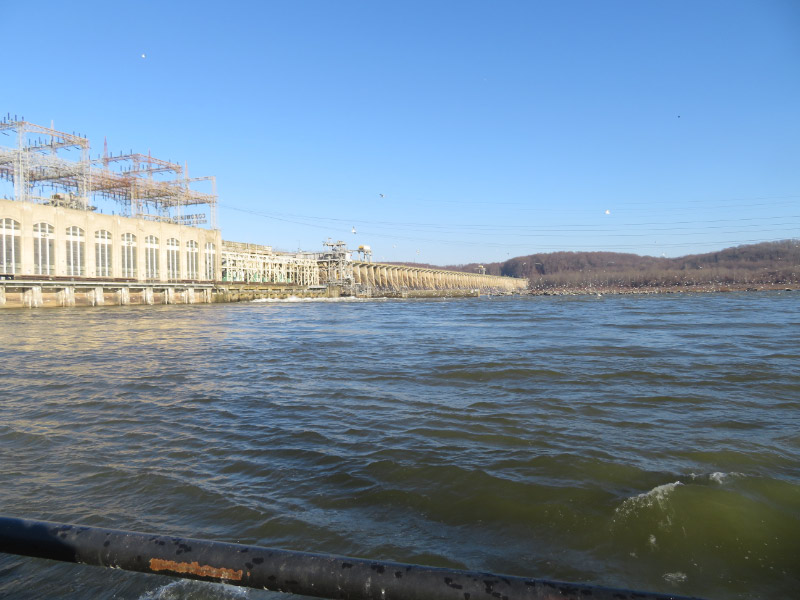
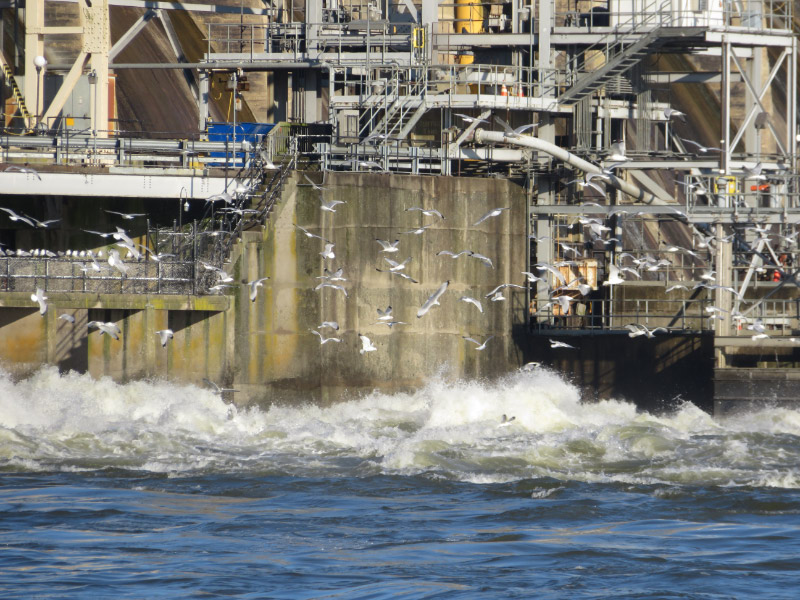
It takes us about an hour to get to Conowingo from our house so we had not put on all our winter gear beforehand. I added ski bibs, a fleece jacket, a silky balaclava, and a hooded scarf before I put on my coat. Foot warmers were added to the bottom of my feet before I put on my hiking boots and I stuck hand warmers in my gloves. At the last minute, I decided to add the bands the legs of the ski bibs to shorten them a little since the pavement was slushy and wet. The temperature was in the 30s…a good but not severe test of the ‘cold weather’ garb. I stayed comfortably warm! The silky balaclava is newest addition and I like it because it easily pulls up over my mouth…are higher over my nose; That would be great for colder or windier days. You can also see that we were not the only ones enjoying the birds at Conowingo on Christmas morning!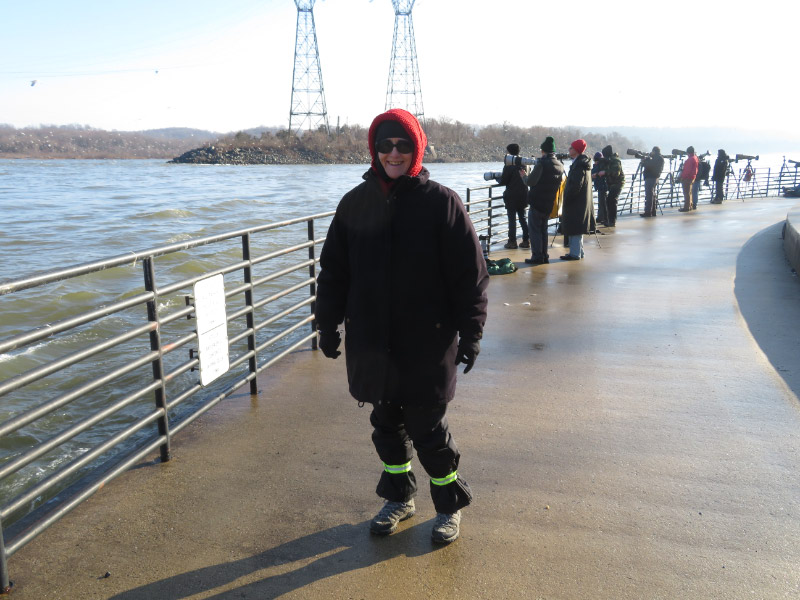
The Bald Eagles are the reason we go to Conwingo. My husband got the best pictures of the day of an eagle that had just caught a fish.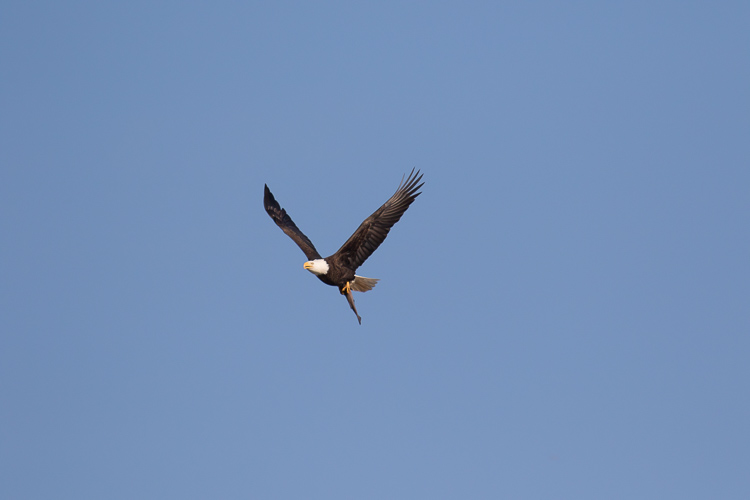
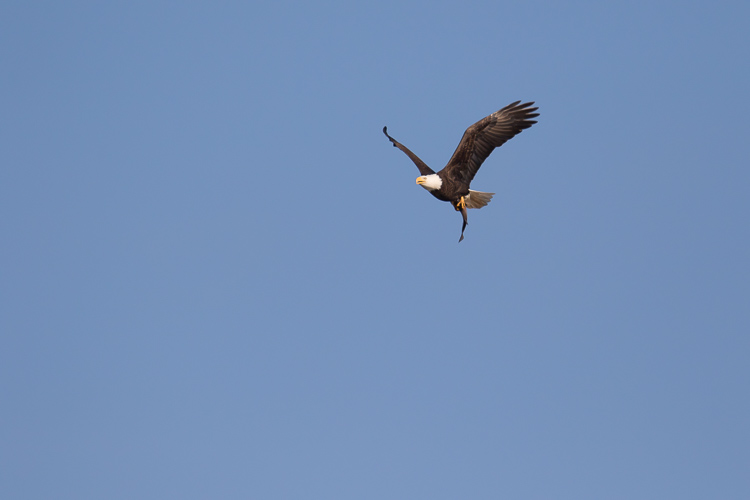
He also took a picture of one up in a tulip poplar tree that we noticed as we talked back to our car getting ready to leave.
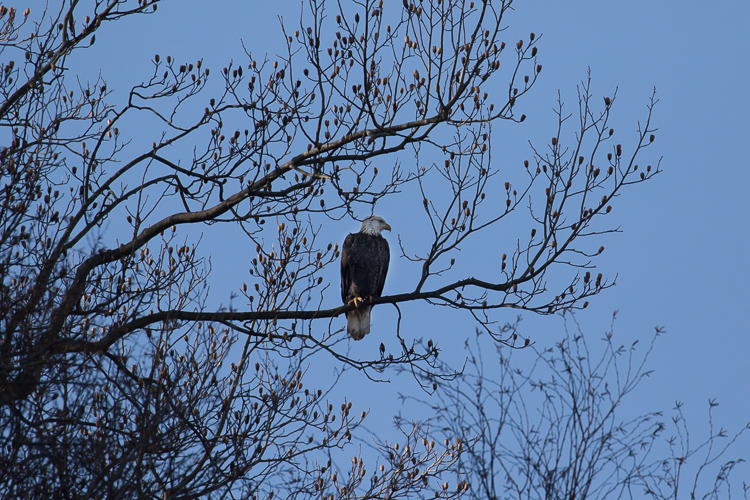
I took some pictures that are past the optical zoom range of my camera…into the digital zoom. There were almost always eagles on the abutment come out from the dam and I couldn’t resist trying to capture their interactions. The one on the left is keeping a firm hold on his catch.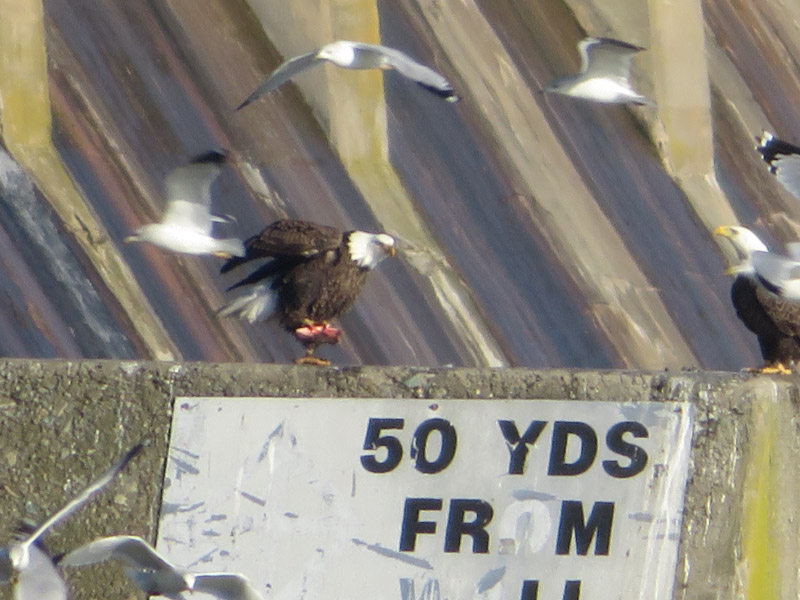
Is this one screaming at the gulls to go away?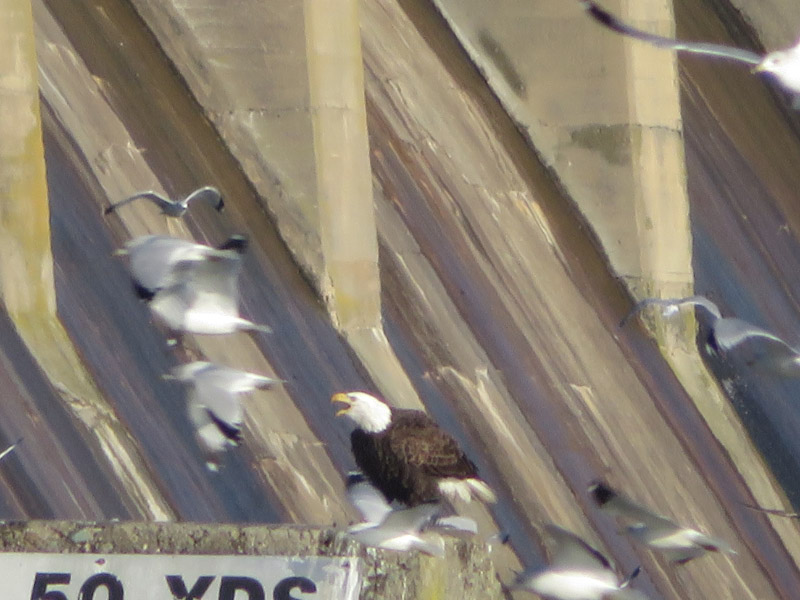
And sometimes there is just a big tussle. There are at least three birds involved in this picture.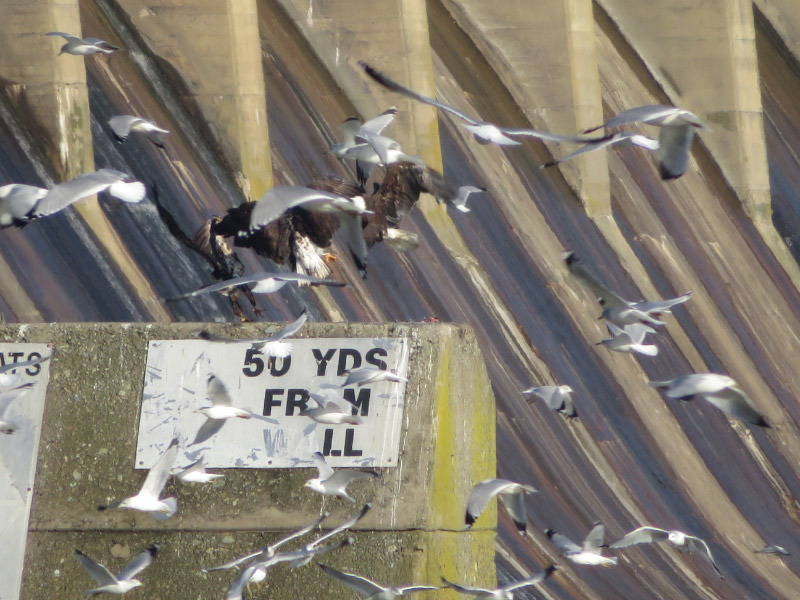
This eagle is surrounded by black vultures – although they all seem to be not making eye contact with each other.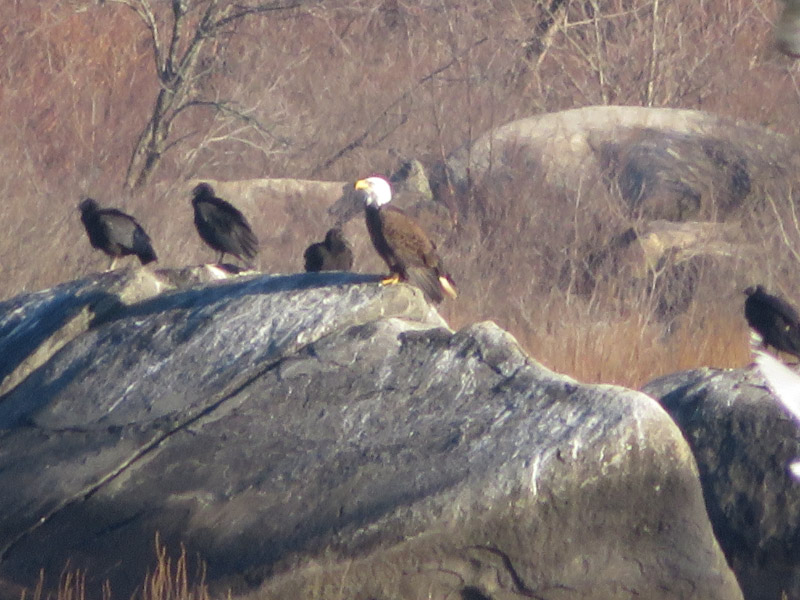
There were groups of black vultures on the railing at the top of the dam…and there always seemed to be one or two that were spreading their wings.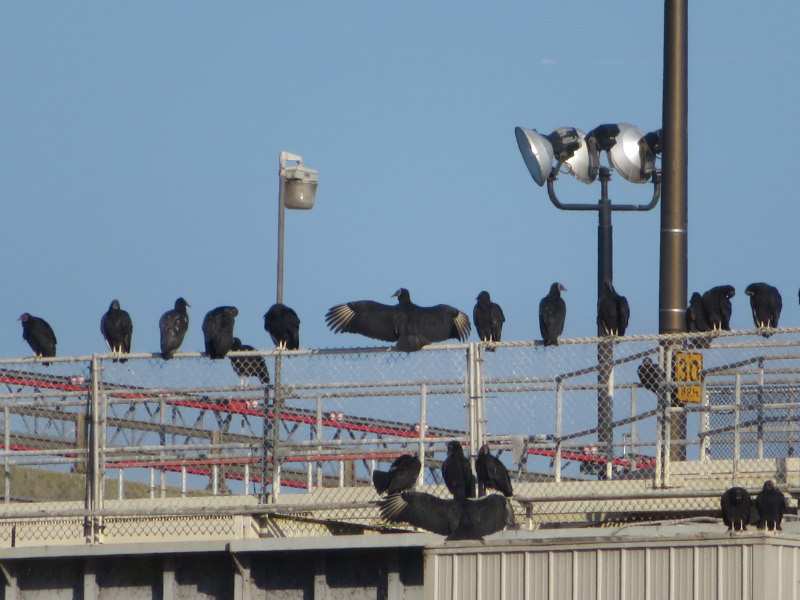
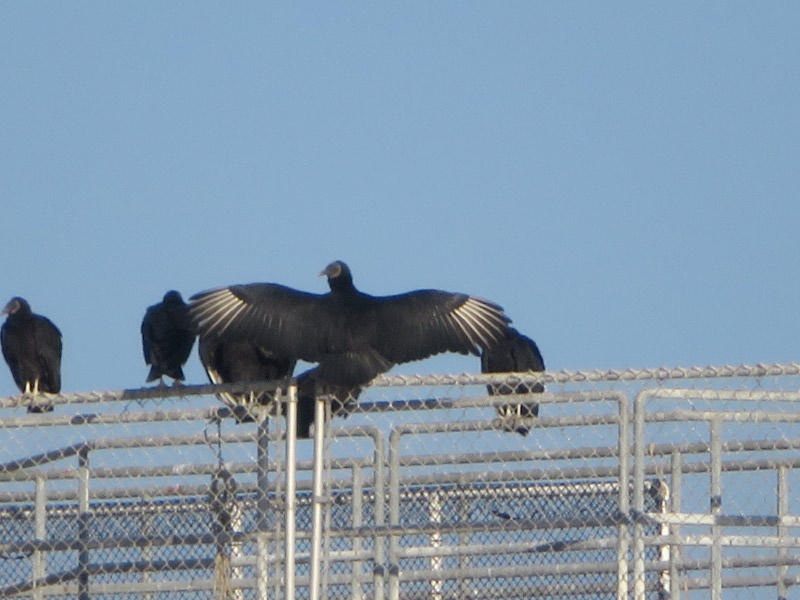
I saw one cormorant in the water…and one flying low over the water.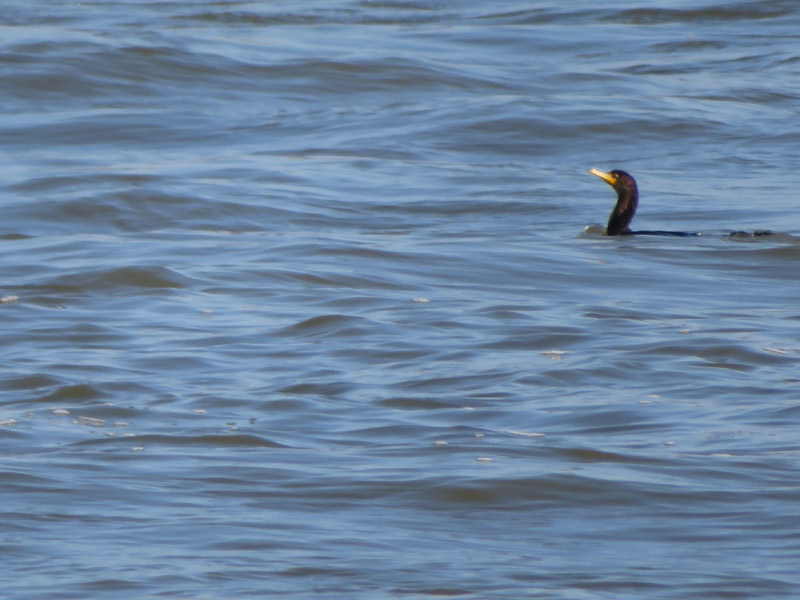
The gulls were ring-billed gulls. They would dive down to catch a fish then (sometimes) bob downstream on the surface.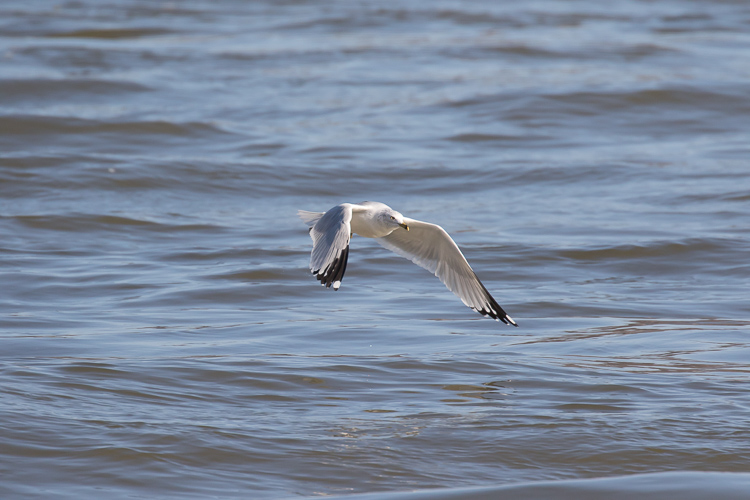
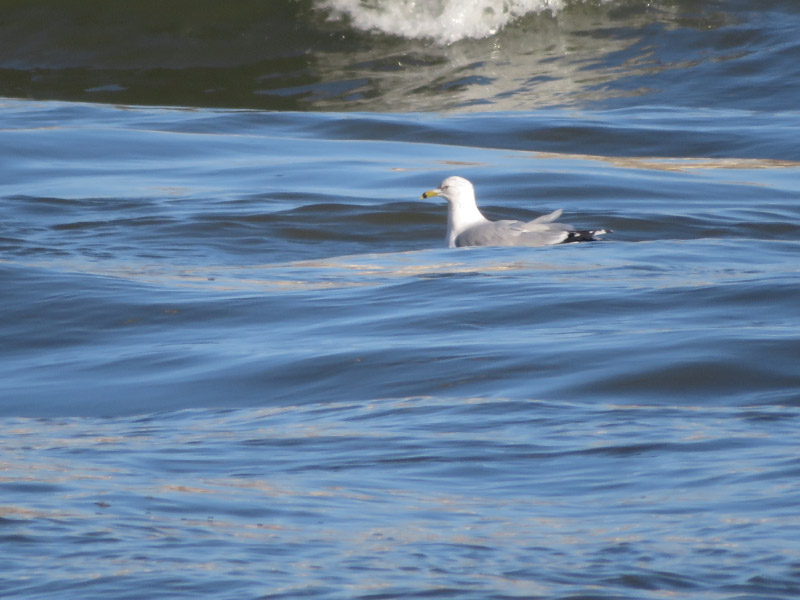
Now for some ‘can you find’ pictures. There is a great blue heron in each of the three pictures below (not flying).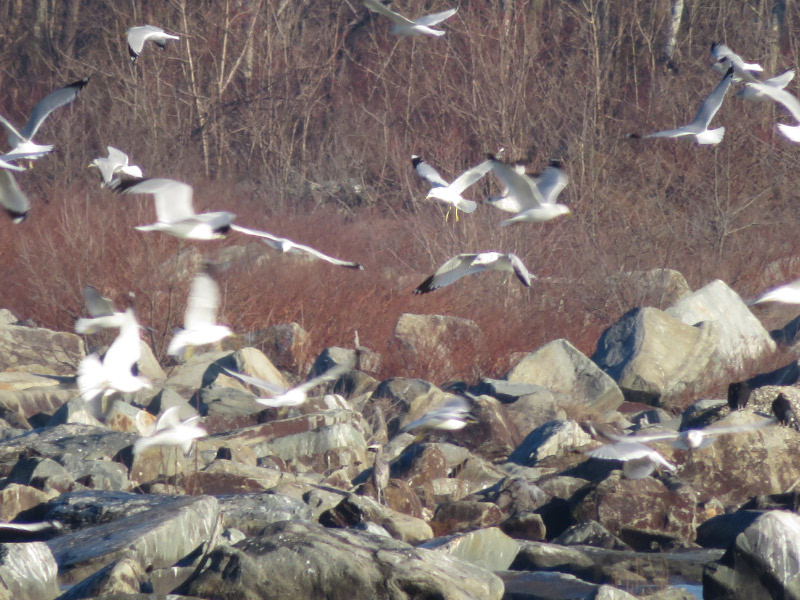

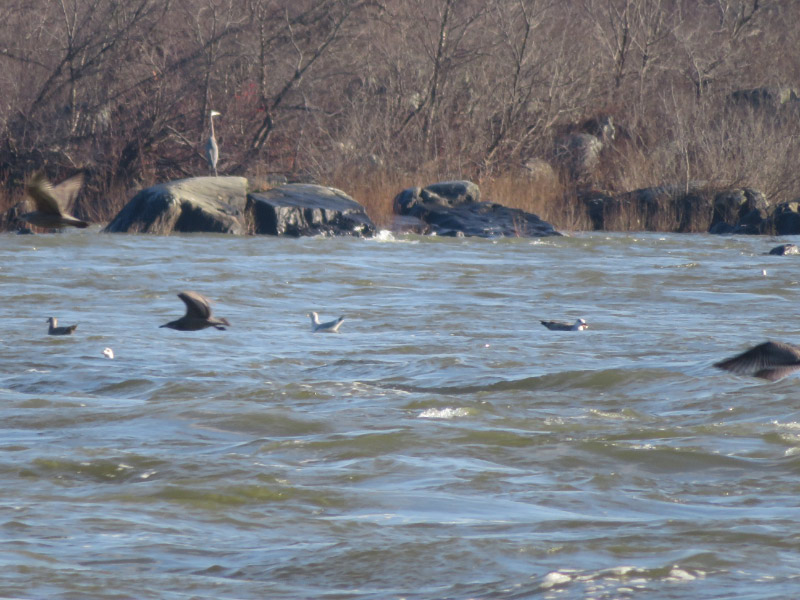
Do you see the pigeons in the picture below?
And finally – do you see the two Bald Eagles?
Conowingo was a good outing for our Christmas morning!


